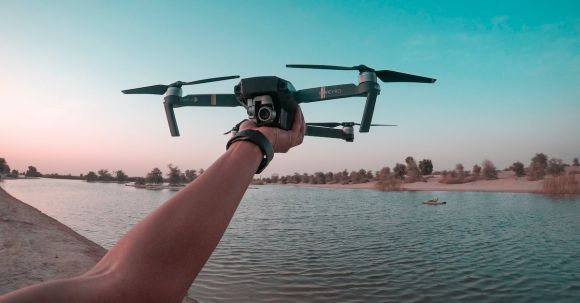Unmanned aerial vehicles, more commonly known as drones, have become increasingly popular in recent years. These small aircraft are equipped with cameras and can be controlled remotely, making them ideal for capturing stunning aerial footage or performing tasks that are difficult or dangerous for humans. However, one question that often arises is how long a drone can stay in the air before it needs to land and recharge. In this article, we will explore the factors that affect a drone’s flight time and discuss some of the advancements in drone technology that are pushing the limits of endurance.
Battery Capacity and Efficiency
The most significant factor that determines a drone’s flight time is its battery capacity and efficiency. Drones are powered by lithium-ion batteries, which provide a high energy density and allow for longer flight times compared to other types of batteries. However, even with the most advanced battery technology, drones still have limitations in terms of how long they can stay in the air.
The size and weight of the drone also play a role in determining its flight time. Larger drones have more space to accommodate larger batteries, which can provide longer flight times. Additionally, lighter drones require less power to stay airborne, resulting in increased efficiency and longer flight times.
Power Consumption
Another crucial factor that affects a drone’s flight time is its power consumption. Drones use energy not only to stay in the air but also to power other components such as cameras, sensors, and GPS systems. The more power these components require, the shorter the drone’s flight time will be.
Flight Maneuvers and Environmental Conditions
The way a drone is flown also impacts its flight time. Performing aggressive maneuvers, such as high-speed flights or sudden changes in direction, increases power consumption and reduces flight time. Similarly, flying in windy conditions or at high altitudes requires more power to maintain stability, resulting in shorter flight times.
Advancements in Drone Technology
As drone technology continues to advance, manufacturers are constantly working to improve flight time. One significant development is the use of swappable batteries. Some drones now allow users to quickly and easily swap out depleted batteries for fully charged ones, extending flight time without the need for lengthy recharging periods.
Solar-powered drones are another exciting advancement in the field. These drones are equipped with solar panels on their wings, which continuously charge the onboard batteries while in flight. While solar-powered drones are still in the early stages of development, they have the potential to stay in the air for extended periods, potentially even months at a time.
Conclusion: Pushing the Limits
While there is no definitive answer to how long a drone can stay in the air, the advancements in battery technology and drone design are continuously pushing the limits of endurance. Factors such as battery capacity and efficiency, power consumption, flight maneuvers, and environmental conditions all play a role in determining flight time.
As drone technology continues to evolve, we can expect to see longer flight times and improved efficiency. This will open up new possibilities for aerial photography, surveillance, delivery services, and other applications that rely on drones. Whether it’s capturing breathtaking aerial footage or performing critical tasks, drones are becoming an indispensable tool with ever-increasing capabilities in the sky.




